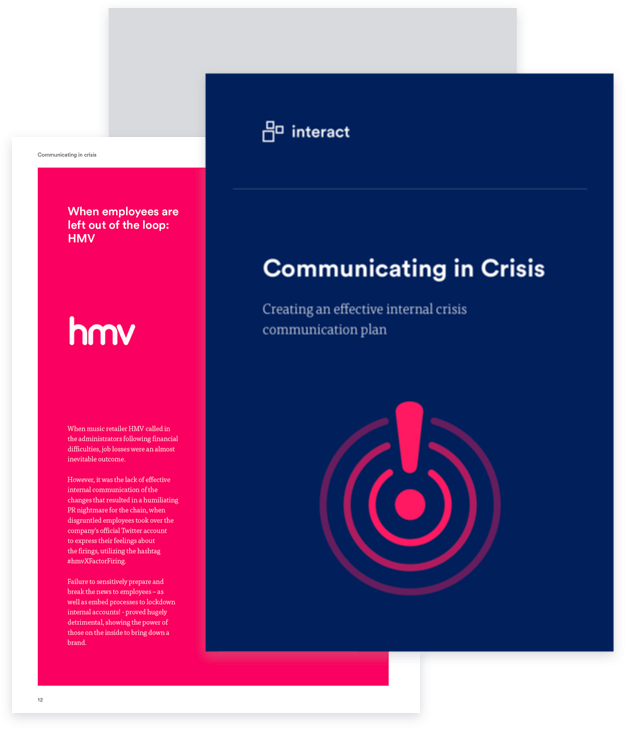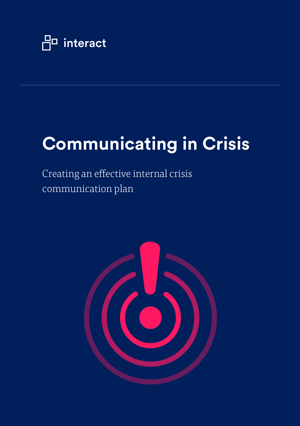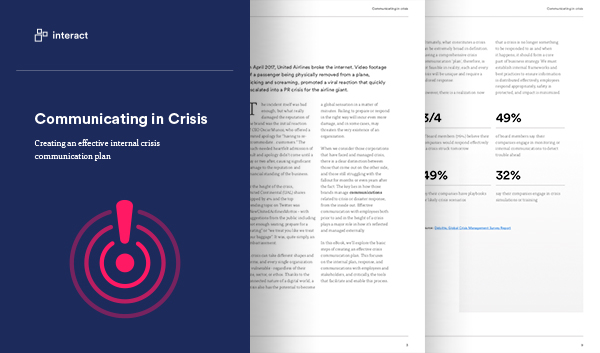When a crisis hits, timing is everything. Planning ahead will ensure you get the right information to the right people, keep your staff safe, and minimize any negative impact. Developing a crisis communication plan should form a critical part of your IC strategy.

Every organization is vulnerable to crises. A crisis may come in many shapes and guises; from a natural disaster or system outage, to a management misdemeanor or a data leak. We often don’t see them coming: by nature, crises can be hard to anticipate. In some cases, we’re the ones accountable or at fault; others may be accidental, and we may even be the victim.
However, the fact remains: crises happen. And we are responsible for how we communicate and respond in the height of a crisis.
When a crisis strikes, the focus inevitably falls on the external response and message. We’re aware that all eyes will be on us and we need to react accordingly if we’re to protect our organization, brand, staff, and customers. But failing to instill a proper internal crisis management plan is a huge risk and will further compound the crisis. If our staff aren’t informed, issues escalate quickly – even catastrophically.
An effective internal crisis communicate plan ensures your employees are prepared for and actively help to mitigate or reduce crisis situations, have the necessary information, processes, and channels freely available if anything happens, and understand what is expected of them should a situation arise.
Here are our 7 simple steps to define your internal crisis communication plan.
Ensure your crisis management is successful
Step 1: Anticipate crises
Bring together not only your crisis team, but representative employees and management for a brainstorming session. Ensure you have monitoring processes set up, such as a whistleblowing system for employees or alerts set up for company mentions.
![]()
Proactively brainstorming potential crisis scenarios can help flag or even mitigate certain changes that have the potential to escalate into a crisis: for example, M&A activity, redundancies, or store and office relocations. It can also throw up any vulnerabilities that need addressing.
Step 2: Create your crisis team and assign responsibilities
Senior management are ideally those on the frontline delivering public statements, but there are a lot of roles involved in effectively managing a crisis from the inside-out. Consider including representatives from HR, legal, and communications/PR in your team. A backup list of subject experts also helps; until it hits, you often won’t know whose knowledge will be required to resolve a situation.
Determine who will hold responsibility for key elements such as dispensing information, ensuring staff are accounted for, or signing off on critical decisions. Do you have a backup plan if important individuals are unavailable?
Top tip: avoid instilling too much red tape. Time is of the essence; if every decision has to be escalated up to senior management, you won’t be efficient in managing a crisis.
Step 3: Map out your internal audience
Different employees will have different circumstances that affect how you reach them in a critical situation. You may have individuals based at home or out on the road; in different offices or timezones; non-desk employees without easy access to a computer or those who don’t speak the language of those at HQ.
Your internal audience also isn’t just direct employees: it extends to their families, your suppliers, seasonal or contracted workers, even communities or customers. Grouping those individuals and considering their unique needs will help you identify any communication gaps or black holes that could cause issues.

Step 4: Map out and audit your communication channels
If you know your audience, you’ll likely already have a good understanding of your comms channels. There is no silver bullet: a multi-channel approach is more likely to get the message out when it matters, so consider everything from email and your intranet to SMS, social media, manager cascades, or even printed posters in communal areas.
Draft a list not only of what they are, but who has the necessary permissions, rights, and access; remove barriers for your crisis team if you find them. Is the information stored in them up-to-date? When was the last time you tested them?
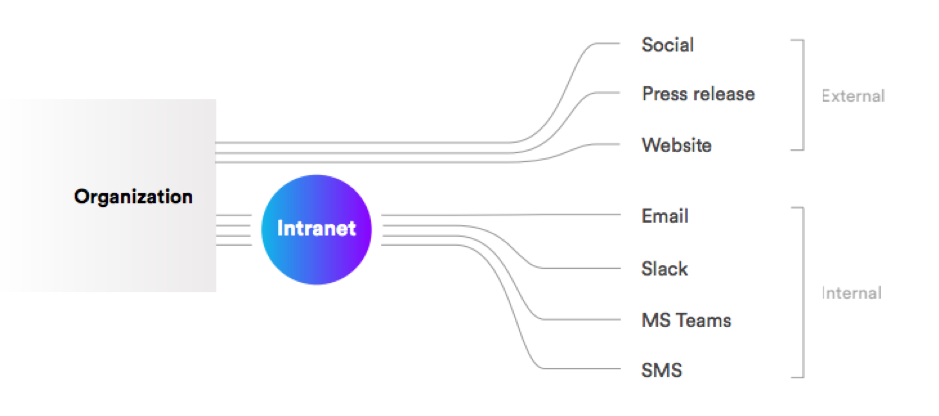
Step 5: Get a two-way employee alert system in place
Crisis communication isn’t one way. In those situations where there are potential threats to safety, it’s essential your staff are not only able to get in touch with managers, but that your crisis team can get instant status visibility and identify those who may be at risk. The ability to send a mass communication along multiple channels simultaneously and understand who has received, read, and acknowledged it is vital.
Interact Broadcasts is designed to facilitate emergency communication efficiently when it matters. Compose a single message within your intranet and instantly distribute it via SMS, email, an intranet blocking notification, and/or a display banner. Staff are prompted to confirm receipt, giving your crisis team all the information they need.
Step 6: Get safety and emergency protocols in place
Those pesky policies aren’t just a legal requirement. Ensuring staff are informed and understand their responsibilities not just during a crisis, but in their day-to-day roles, can help manage incidents far more effectively. These should cover everything from travel safety to response protocol during adverse weather or a fire.
Make them accessible, visible, and easy to find. Establish regular review timescales to keep them up-to-date and consider how you’ll ensure staff read them. Including them during onboarding is common, but regular training or awareness days with quizzes or polls can help keep the information front-of-mind.
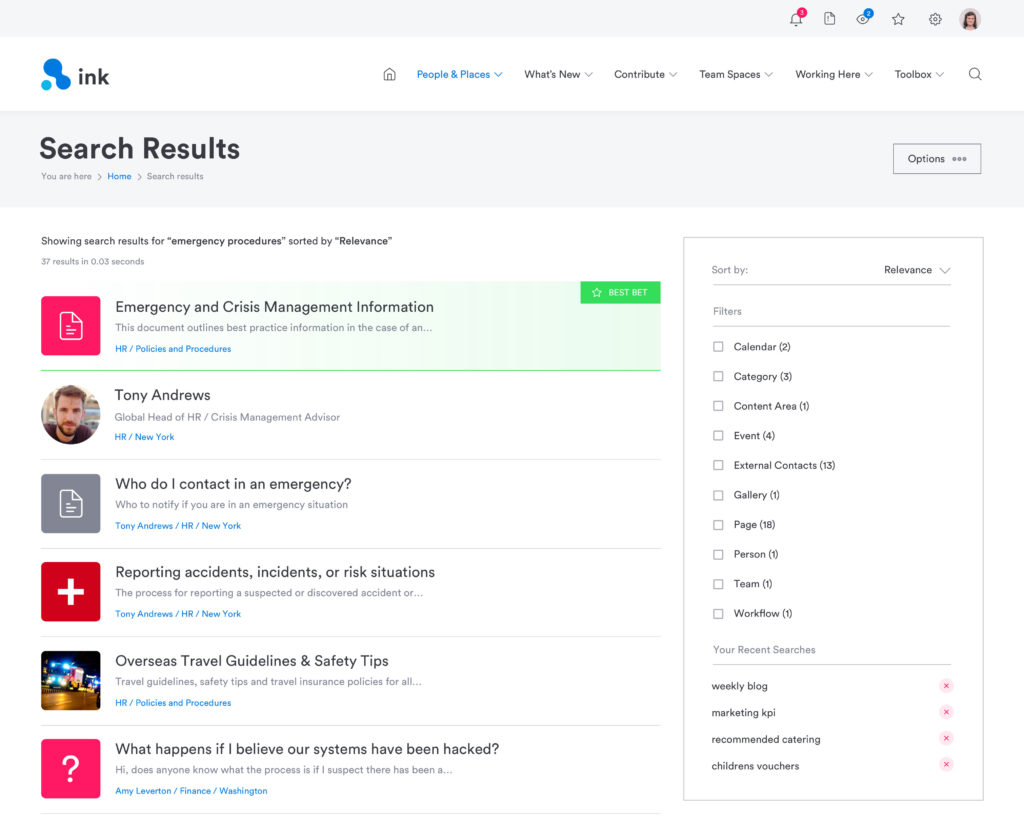
Step 7: Develop holding statements and templates
You may not know what crisis is going to hit, but you can ensure you’re covered for that dreaded ‘grey area’ period before you have all the facts to release a statement or response. Holding statements and templates can be modified and released quickly when needed.
For example:
We have deployed our crisis response plan, which places the highest priority on the safety and wellbeing of our staff and customers. We will release more information and updates via [X channels] as soon as possible.
Templates that prompt you to include all the vital information when drafting an internal communication can prove invaluable in a stressful or time-sensitive situation. When we’re under pressure, it’s amazing what can be unintentionally missed.
Response matters
If we’re to take anything away from the fallout from the Oxfam scandal, United Airlines’ forced removal of a passenger, or perhaps Pepsi’s poorly planned ad, it’s the potential for any crisis to become a global sensation in a matter of minutes. Thanks to the power of social media and the accountability we place on organizations, the response to an incident is just as – if not more – important than the crisis itself.
Our employees have a critical role to play in managing and resolving issues affecting us; they can be our greatest asset, or potentially, our biggest liability. As those on the front line dealing directly with customers or communicating with their own network, they’re in the spotlight. Failing to plan and prepare them effectively will incur further damage, threaten your brand reputation, and in serious cases, may even pose a threat to the very existence of your organization.
